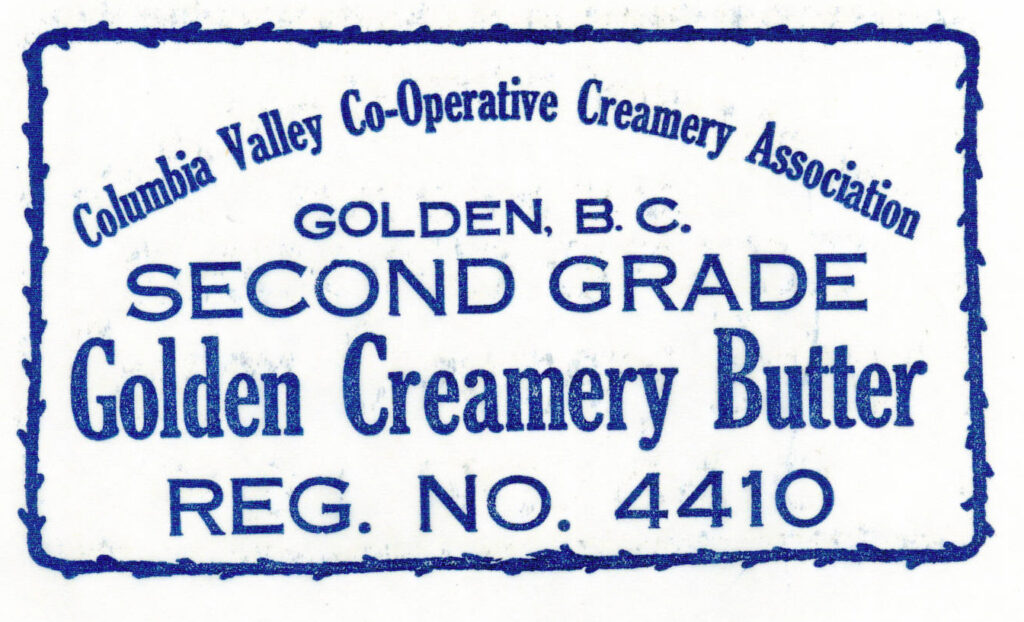Columbia Valley Co-Operative Creamery Association

The people of the valley were looking at ways to use some of the resources they already had to create financial opportunities. The realized that unless they all worked together, much as we all did when it appeared that the mill was going to close in 1996, they wouldn’t be successful.
Those interested held a lively meeting early in 1915. The following was reported by “The Golden Star.” “What we want here is a creamery,” said Mr. Mitchell. “We have railroad facilities throughout the valley, and all that is needed is from 300-400 cows producing milk and we will have the creamery. We have about 50 cows now and I expect to add to my heard next spring, and others contemplate the same thing.”
It is the intention of the members to investigate the possibility of borrowing money to increase and improve dairy herds in the valley.
In the discussion of the best grade of cow used in the valley, there was a spirited and instructive debate between Mr. King and Mr. Mitchell. Mr. King, having a Holstein bull, has strong leaning to that breed. Mr. Mitchell, basing his arguments upon information supplied by the provincial diary experts, favors the Ayrshire.
As a result of a meeting of the Golden Farmers’ Institute, held Nov. 12, 1915, the farmers decided to take the steps necessary to secure a creamery. One of the farmers, Lawrence Mitchell explained that the provincial government had in 1913, been willing to provide breeding stock to farmer’s institutes and deliver animals, freight paid, to any point in the province. The government would assume 20 percent of the cost of the animals and the rest would be payable in a series of equal payments over a series of years.
It was several years before the farmers had the opportunity to prove to the government they were serious, but finally in 1922 they got the news they were waiting for when the Hon. E.C. Barrow stated the government was prepared to erect a creamery under the following conditions.
The farmers would have to form a creamery association and provide a suitable building. The estimated cost of this would be about $3,000. The structure would have to be 24 feet by 45 feet. They recommended renting if possible.
The government would supply full equipment for manufacturing butter and would provide a buttermaker for one season without charge to the farmers. At the end of one season it would be up to the farmers to either take it over or to tell the government they did not want it. The full equipment necessary would cost $3,250. This amount could be paid over a number of years at Land Settlement Board rate of interest.
The creamery association would do all the buying and selling. The government would bring stock in through the Cattle Clubs, paying 20 per cent of the value when delivered and the balance spread over two years. And so began the Columbia Valley Creamery Association.
The cattle arrived and were distributed among the farmers and the prices were set. Butter wholesale 42 cents a lb. Butter retail 50 cents lb. Ice cream, $7.50 for 5 gallons at the creamery. A buttermaker was hired. Our butter was sold all over the province, wrapped in our own butter wrappers that indicated the class or quality of the butter. All the first class butter was shipped out. We kept the second class butter here for local use.
The war took a large toll on the production of butter and with a huge advertising campaign set to sell the consumer the new “margarine” it seemed the creamery was doomed. However, the farmers held out and continued to work, keeping the creamery in cream and the buttermaker in work.
When eventually the farmers decided the business was no longer viable they paid out the shareholders the sum of $84.70 per share. Those same shares had been purchased at $25 per share. A success all around when you consider the creamery helped earn a living for the farmers in our area for over 35 years.
